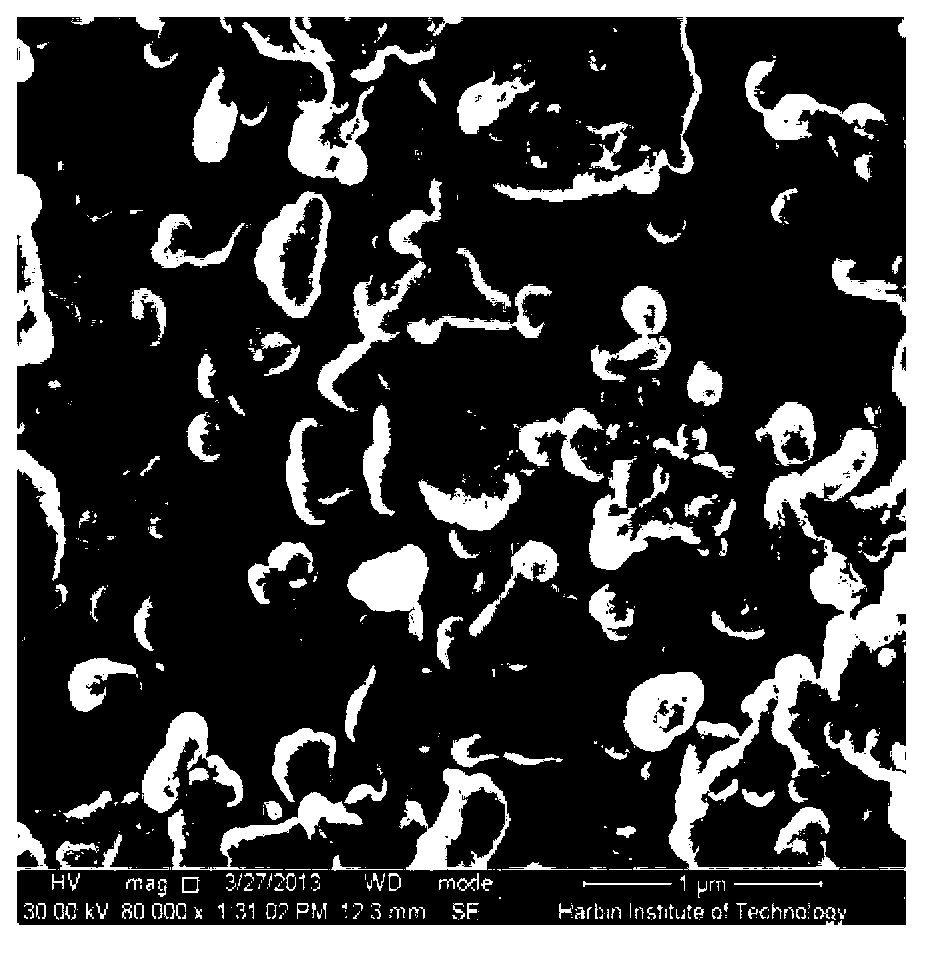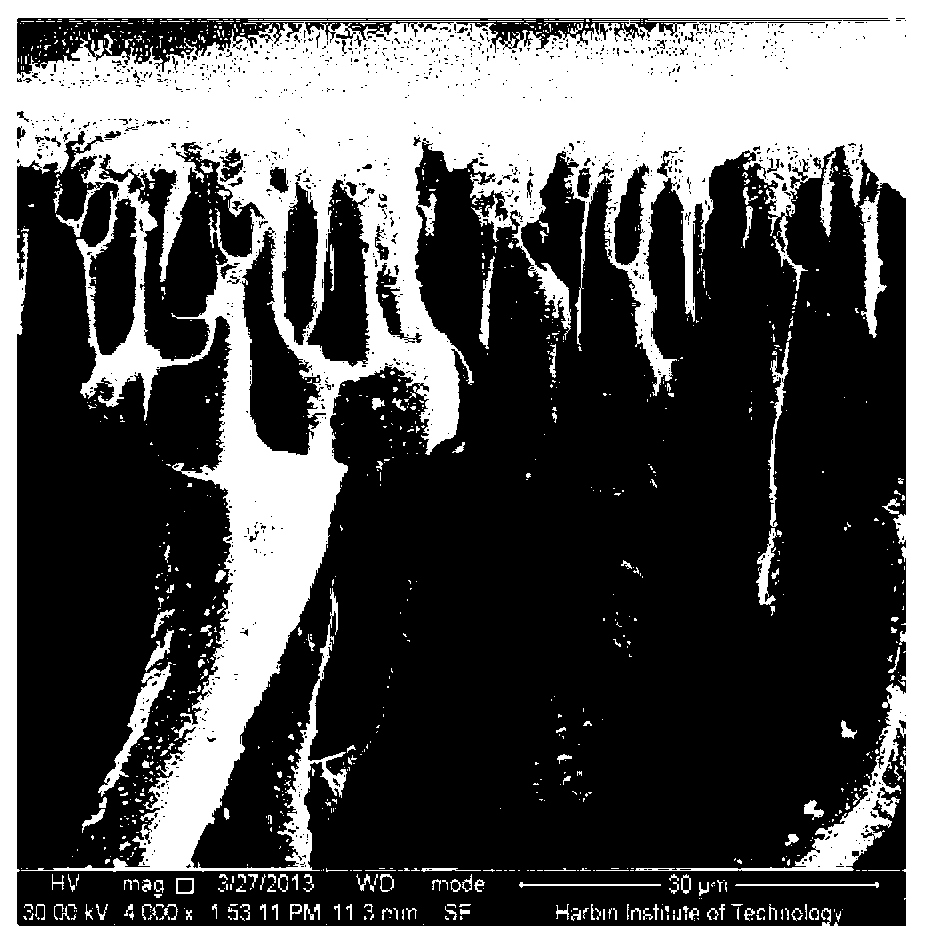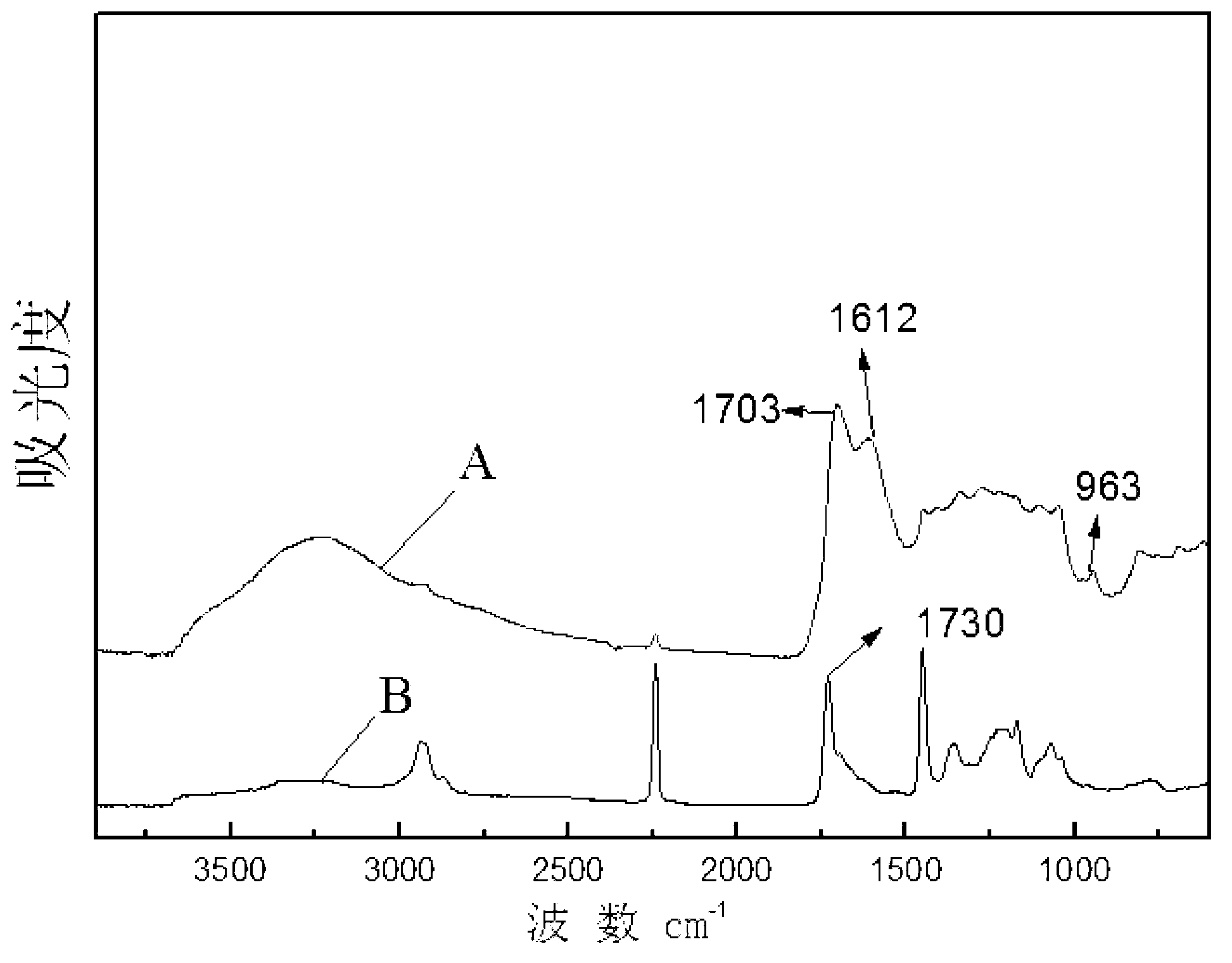Preparation method of solvent-resistant compound nanofiltration membrane
A composite nanofiltration membrane and solvent-resistant technology, applied in chemical instruments and methods, membrane technology, semi-permeable membrane separation, etc., can solve the problems of low solvent permeation flux, good compatibility of alcohol solvents, etc., and achieve excellent stability properties, increase anti-pollution properties, and increase the effect of binding properties
- Summary
- Abstract
- Description
- Claims
- Application Information
AI Technical Summary
Problems solved by technology
Method used
Image
Examples
specific Embodiment approach 1
[0018] Specific embodiment one: This embodiment is a preparation method of a solvent-resistant composite nanofiltration membrane, specifically prepared according to the following steps:
[0019] 1. Preparation of ultrafiltration base membrane: First, dissolve the polymer in a solvent to prepare a polymer solution with a mass fraction of 18% to 25%, and then use the immersion-precipitation method to dissolve the polymer with a mass fraction of 18% to 25%. The solution is made into an ultrafiltration basement membrane;
[0020] 2. Preparation of pyrrole-ethanol / graphene oxide solution: first, graphene oxide is ultrasonically dispersed in ethanol, then pyrrole is added, and after mixing, pyrrole-ethanol / graphene oxide solution is obtained; described pyrrole-ethanol / graphene oxide solution The mass fraction of pyrrole is 0.5% to 20%; the mass fraction of graphene oxide in the pyrrole-ethanol / graphene oxide solution is 0.01% to 0.5%;
[0021] 3. Configure strong oxidant solution: ...
specific Embodiment approach 2
[0028] Embodiment 2: The difference between this embodiment and Embodiment 1 is that the polymer described in Step 1 is polyetherimide, polysulfone, polyethersulfone, polyacrylonitrile or polytetrafluoroethylene. Others are the same as the first embodiment.
specific Embodiment approach 3
[0029] Embodiment 3: The difference between this embodiment and Embodiment 1 or 2 is that the solvent described in step 1 is N-methylpyrrolidone, dimethylformamide, dimethylacetamide or dimethyl sulfoxide. Others are the same as those in Embodiment 1 or 2.
PUM
 Login to View More
Login to View More Abstract
Description
Claims
Application Information
 Login to View More
Login to View More - R&D
- Intellectual Property
- Life Sciences
- Materials
- Tech Scout
- Unparalleled Data Quality
- Higher Quality Content
- 60% Fewer Hallucinations
Browse by: Latest US Patents, China's latest patents, Technical Efficacy Thesaurus, Application Domain, Technology Topic, Popular Technical Reports.
© 2025 PatSnap. All rights reserved.Legal|Privacy policy|Modern Slavery Act Transparency Statement|Sitemap|About US| Contact US: help@patsnap.com



